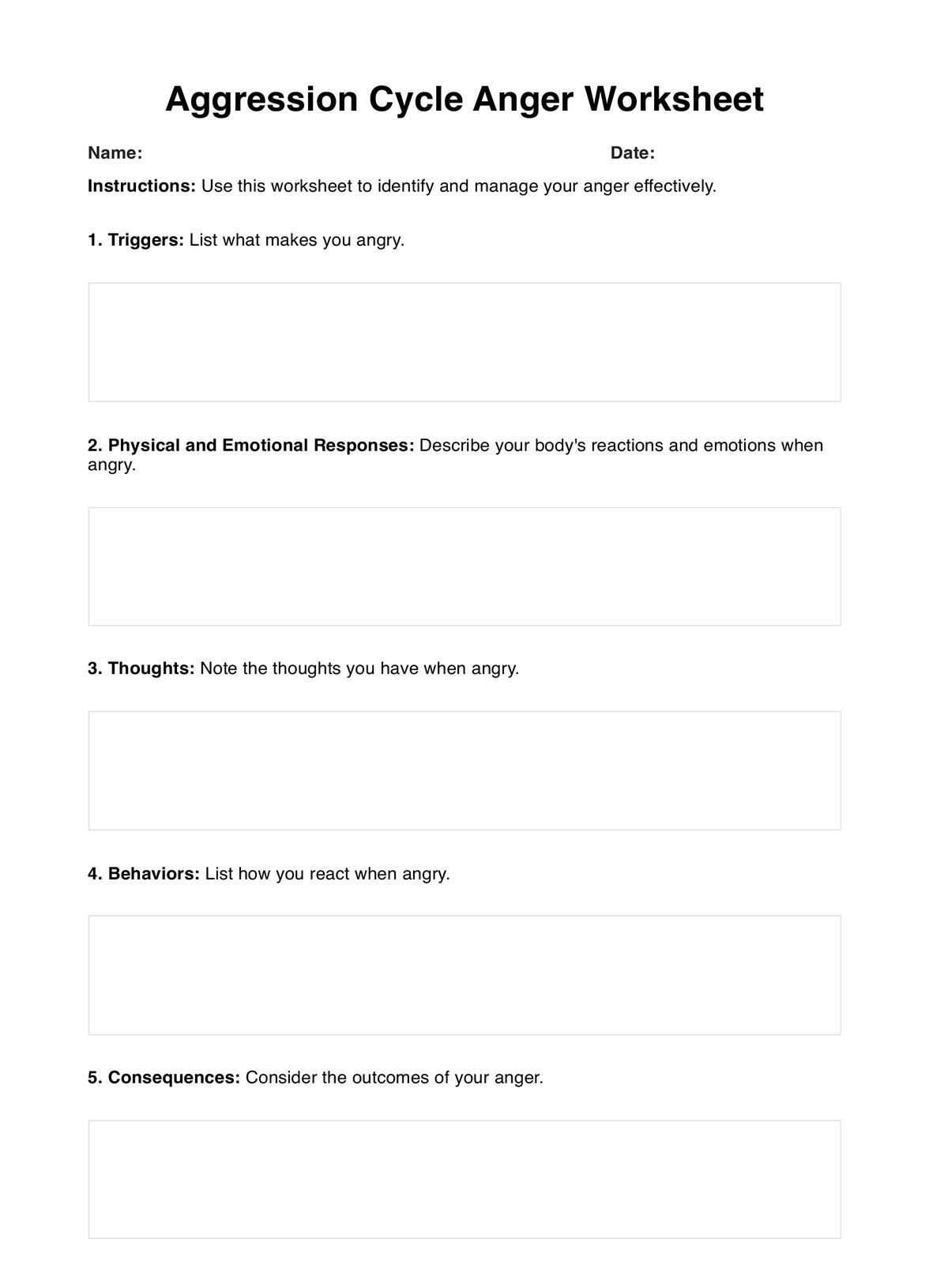The time to finish the worksheet varies but can take 30 minutes to an hour or more, depending on the individual's complexity of issues and willingness to engage with it.

Aggression Cycle Anger Worksheet
Looking to break the cycle of anger? Discover the Aggression Cycle Anger Worksheet for effective anger management. Download now!
Aggression Cycle Anger Worksheet Template
Commonly asked questions
The worksheet helps individuals understand their anger triggers, emotions, thoughts, and consequences. It empowers them to develop healthier coping strategies, improve emotional regulation, and break the cycle of aggression.
Use the worksheet when actively seeking to manage anger and improve emotional well-being. Ideal for those struggling with anger issues, therapists, counselors, psychologists, and educators can use it in therapy sessions, support groups, or anger management classes.
EHR and practice management software
Get started for free
*No credit card required
Free
$0/usd
Unlimited clients
Telehealth
1GB of storage
Client portal text
Automated billing and online payments











